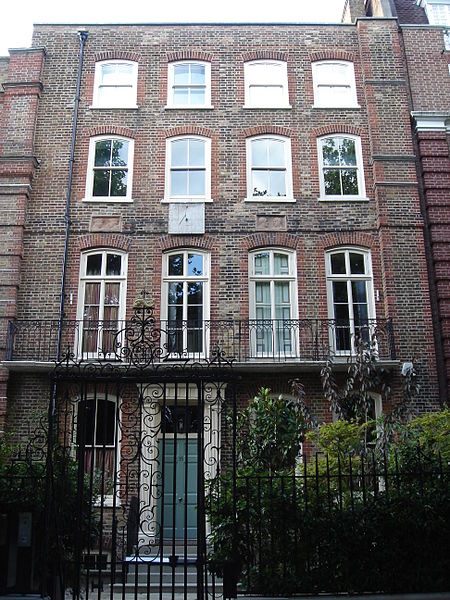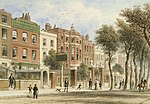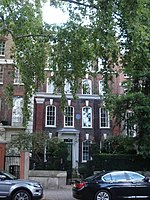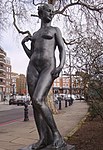15 Cheyne Walk
1718 establishments in EnglandBuildings and structures on the River ThamesGrade II* listed buildings in the Royal Borough of Kensington and ChelseaGrade II* listed houses in LondonHouses completed in 1718 ... and 3 more
Houses in the Royal Borough of Kensington and ChelseaQueen Anne architecture in the United KingdomUse British English from January 2014

15 Cheyne Walk is a Grade II* listed house on Cheyne Walk, Chelsea, London, built in 1718. It was originally known as Carlton House. It is considered to be a replica of 4 Cheyne Walk.Notable former residents include the landscape painter Cecil Gordon Lawson, the engraver Henry Thomas Ryall, the Allason family, well known for their political and literary influence, and the Baron and Baroness Courtney of Penwith.
Excerpt from the Wikipedia article 15 Cheyne Walk (License: CC BY-SA 3.0, Authors, Images).15 Cheyne Walk
Cheyne Walk, London Chelsea (Royal Borough of Kensington and Chelsea)
Geographical coordinates (GPS) Address Nearby Places Show on map
Geographical coordinates (GPS)
| Latitude | Longitude |
|---|---|
| N 51.48399 ° | E -0.16573 ° |
Address
Cheyne Walk 15
SW3 5RD London, Chelsea (Royal Borough of Kensington and Chelsea)
England, United Kingdom
Open on Google Maps











